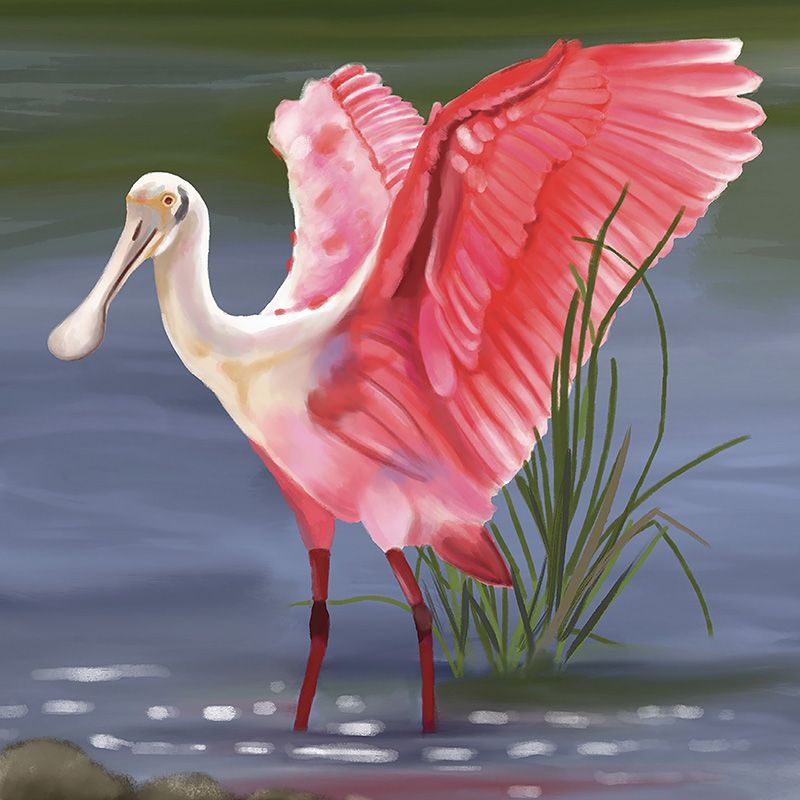Why the once rare birds are increasingly being spotted in Charleston

Once rare in the Lowcountry, these pink-feathered birds with spoon-shaped bills have become a more common sight in recent years, thanks to preservation efforts and, surprisingly, climate change, which is expanding their breeding range. Roseate spoonbills (Platalea ajaja) are a delight to watch as they gracefully sweep their bills back and forth, foraging in tidal pools and creeks for a tasty dinner. Take a closer look at these lovely, long-legged wading birds that are increasingly making Charleston their full-time residence
Comeback Kids By the early 1900s, the species was almost extinct in the US due to over-hunting for its colorful plumes and the loss of the bird‘s natural wading and nesting environments. Through preservation efforts, the roseate spoonbill has made a remarkable rebound with a population that is steadily spreading across the coastal Southeast.
Birds of a Feather Spoonbills are social and often seen feeding in groups; flying in formation; and nesting with kindred species, such as herons, ibis, and storks. They establish their rookeries in low trees and shrubs overhanging ponds or lagoons.
Creek Sweeper When feeding, the birds work in groups, swinging their spoon-shaped bills from side to side as they steadily walk the shallows, snapping up small fish, crabs, and shrimp. A chick isn‘t born with the namesake bill, but at about nine days old, its beak starts to flatten, and 30 days later, it is almost full size.
Love Birds Courtship displays include dancing; clapping; and “gifting,” a mutual exchange of nesting materials. The female builds the nest, while the male provides her with twigs, sticks, and other supplies. The parents take turns sitting on the nest during incubation (about 22 days), and once the chicks hatch, they share the responsibility of feeding them. After about six weeks, the hatchlings develop wing feathers ready for test flights. They can live up to 15 years.
More than a Pretty Face The long, flat, rounded bill is not this wader’s only unusual attribute. The birds also have bright red eyes and long pink legs. When they sleep, they stand on one leg with their heads tucked under a wing. They can grow to be two-and-a-half feet tall with a wingspan of up to five feet. Like ibis and storks, they fly with their necks outstretched. When they get old, they start to bald, losing the feathers on top of their heads.
In The Pink Similar to flamingos, roseate spoonbills‘ pink coloration is a result of their diet of shrimp and other crustaceans that contain pigments called “carotenoids.” Their upper necks and backs are white, but depending on age and location, their wings and feathers can become such a deep pink that they appear almost red. The rose hues are enhanced as they mature.